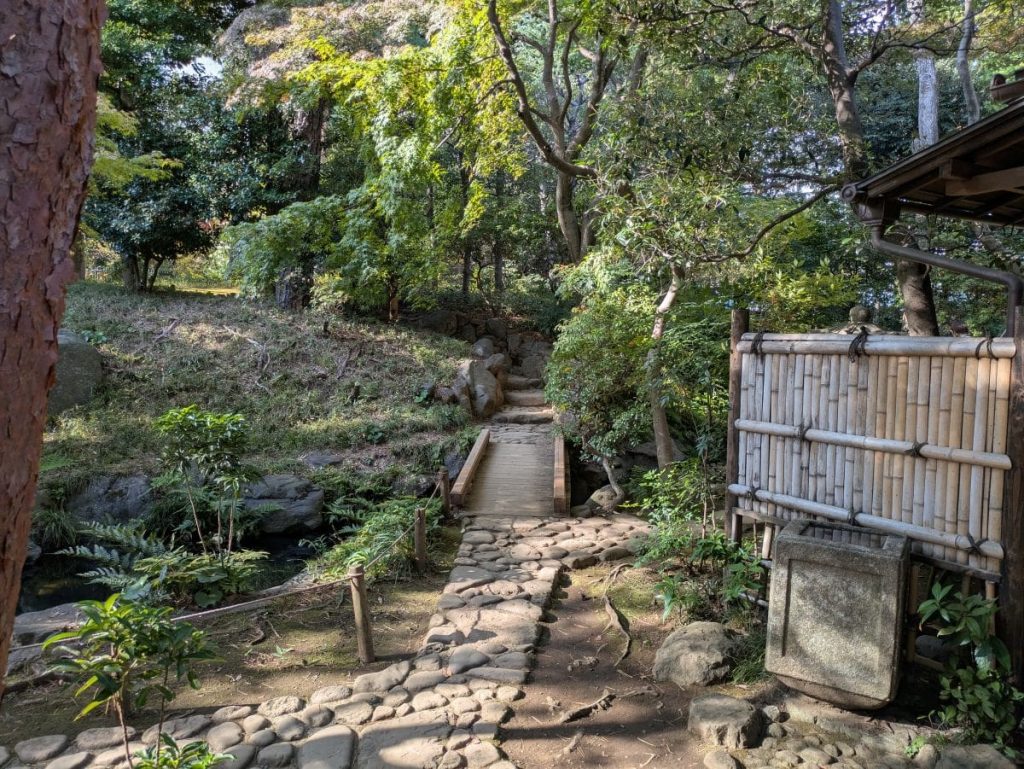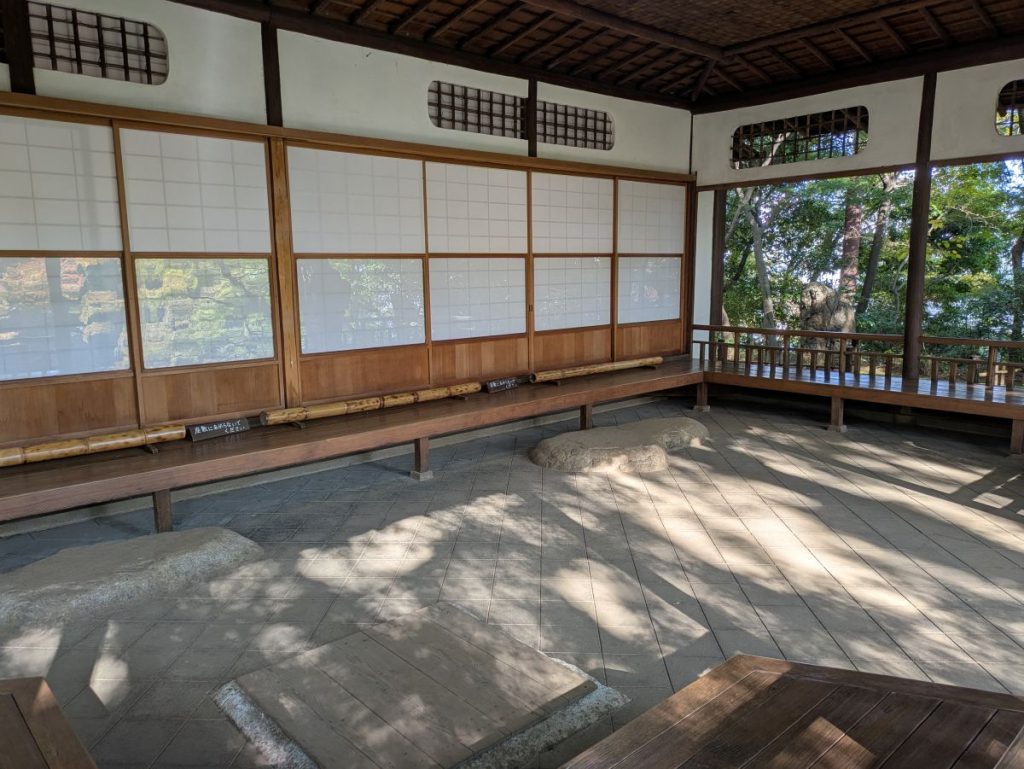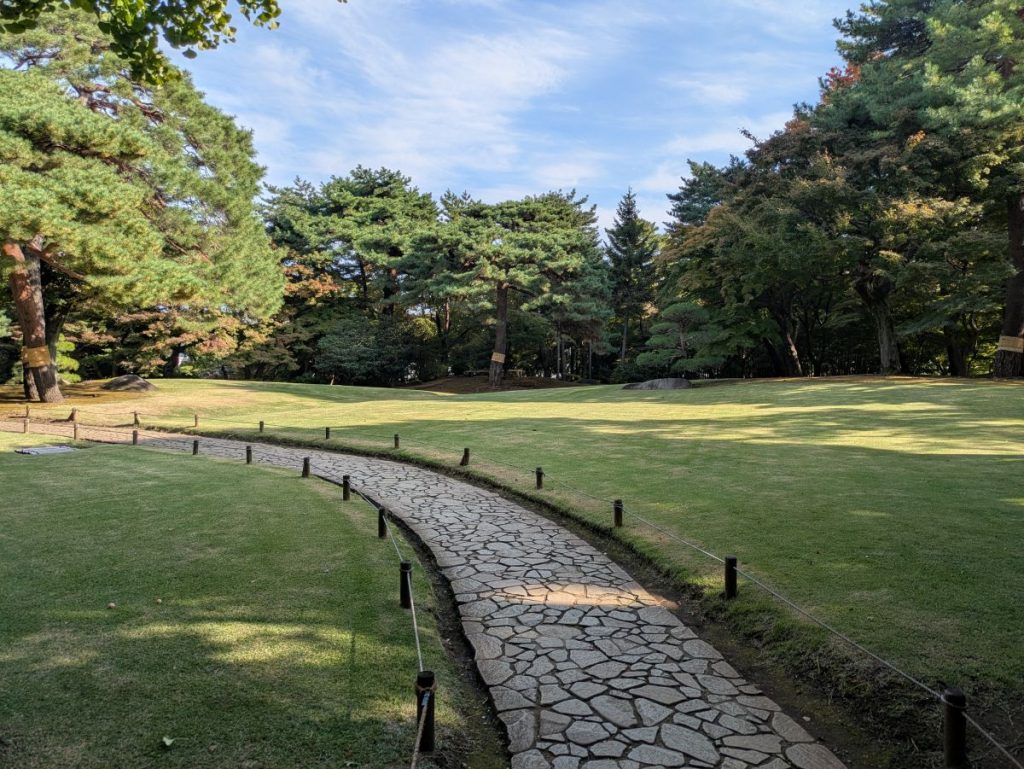Just a short train ride from downtown Tokyo lies Tonogayato Gardens, a hidden green refuge nestled in the suburb of Kokubunji. This peaceful retreat makes artful use of the Musashino Plateau’s natural topography, creating a multi-level haven of lawns, woods, and water features. In fall, it erupts into a riot of color, earning its designation as an official Place of Scenic Beauty.
Yet despite its beauty and convenient location (only two minutes’ walk from Kokubunji Station), Tonogayato remains relatively overlooked — meaning you might have its winding paths and scenic views mostly to yourself. Visitors are rewarded with an immersion in Japanese garden artistry and a sense of history, all hidden in plain sight on Tokyo’s western fringe.
From Private Villa to Public Garden
Tonogayato Gardens’ story begins in the early 20th century, when it was laid out (1913–1915) as part of a private villa for Eguchi Teijo, a railway executive. In 1929, the property was acquired by Koyata Iwasaki, a member of the Mitsubishi founding family, who expanded and refined the grounds into a circular strolling garden, adding features like the Koyo-tei tea house by 1934. The Iwasaki family used the garden as a verdant retreat from the city.
 Tonogayato Gardens (©JAPAN Forward)
Tonogayato Gardens (©JAPAN Forward)
By the 1970s, however, this historic estate faced the threat of urban redevelopment. A local campaign to save the garden succeeded, and the Tokyo Metropolitan Government purchased the property in 1974. Tonogayato was then opened to the public in 1979, allowing everyone to enjoy what had once been an exclusive family garden.
In 1998, it was officially designated a cultural asset (Place of Scenic Beauty), cementing its status as a treasured urban green space.
Landscape and Unique Features
Tonogayato Gardens delights visitors with its varied landscape, shaped by both design and nature. The garden sits along the edge of the Musashino Plateau, and the designers cleverly incorporated the dramatic change in elevation.
On the upper level, a broad lawn and grove of trees create a spacious picnic-friendly area, reminiscent of a Western-style garden.
From there, paths meander down steep wooded slopes into a valley section, where a spring-fed pond named Jiro Benten Ike lies shimmering under arched bridges. A small waterfall fed by natural springs trickles through the rocks — water that emerges from the cliffside and eventually flows to the Nogawa River beyond the garden. In this lower area, you’ll also find a stepped bamboo forest whispering in the breeze, as well as stone lanterns and rustic footpaths that evoke a timeless tranquility.
 Koyo-tei Tea House
Koyo-tei Tea House
Perched partway up the hillside is the charming Koyo-tei tea house (also called Momiji-tei, or “Fall Foliage Pavilion”). Added by the Iwasaki family, the tea house offers a perfect panorama of the pond and surrounding trees. Visitors can imagine the Iwasaki clan once admiring the same view while sipping tea. (Today, the tea house can even be rented for tea ceremony gatherings.)
 Koyo-tei Tea House (©JAPAN Forward)
Koyo-tei Tea House (©JAPAN Forward)
True to its name, Koyo-tei is especially beloved as a vantage point for fall maple leaves. However, it’s an inviting shelter year-round, complete with the gentle sound of a shishi-odoshi water bamboo fountain tapping away behind it. Together, the plateau’s heights and valley’s depths give Tonogayato a dynamic scenery that sets it apart from flatter city parks.
Wisteria Weaves the Spring Light
One of the pleasures of Tonogayato is how it showcases different seasonal highlights throughout the year. In early spring (late March to early April), a few cherry blossom trees bloom, dotting the garden with pale pink and heralding the change of season.
By late April and into Golden Week (early May), the garden’s historic wisteria vine, said to date back to the Iwasaki era, comes into spectacular flower. Delicate purple wisteria clusters hang from a trellis near the entrance, perfuming the air and providing a romantic sight that makes the small admission fee worthwhile. Near the wisteria, a tunnel of hagi (bush clover) later blossoms with tiny purple flowers around September, bridging the gap between summer and fall.
As temperatures climb, summer brings lush greenery and even some hydrangeas in the rainy season, offering a cool refuge under the garden’s canopy.
 Golden Fall Glory
Golden Fall Glory
But it is in the fall that Tonogayato truly lives up to its name. In mid-to-late November, the many maple trees (momiji) and other deciduous foliage turn brilliant shades of red, orange, and gold. The fall foliage typically peaks from late November into early December.
 A dragonfly stops for a breather at Tonogayato Gardens (©JAPAN Forward)
A dragonfly stops for a breather at Tonogayato Gardens (©JAPAN Forward)
During this period, the views from Koyo-tei and around Jiro Benten Pond are breathtaking: vibrant reflections shimmering in the water, and paths framed by fiery leaves. It’s a favorite season for photographers and strolls, yet even at peak color, the garden remains far less crowded than famous central Tokyo spots.
Each season in Tonogayato offers something special, whether it’s flowering yamazakura cherries in spring or the serene snow-dusted pines of winter.
Access and Opening Hours
Tonogayato Gardens is easily accessible and visitor-friendly. It is located at 2 Minami-cho, Kokubunji City, Tokyo, just steps from Kokubunji Station on the JR Chuo Line (also served by the Seibu Kokubunji and Tamako Lines).
 Entrance to Tonogayato Gardens (©JAPAN Forward)
Entrance to Tonogayato Gardens (©JAPAN Forward)
From Shinjuku Station in central Tokyo, the journey is under 30 minutes by rapid train, making it an ideal half-day excursion out of the city’s hustle. Despite this convenience, the garden’s tucked-away location in west Tokyo means it feels much more tranquil than the big parks downtown.
The garden is open daily from 9:00 AM to 5:00 PM (last entry 4:30 PM), closed only during the New Year holidays. Admission costs just ¥150 for adults, with discounts for seniors and free entry for young children. There are restroom facilities and a small visitor center on site (which sometimes hosts exhibits or hands out English information brochures).
 RELATED:
RELATED:
Author: Daniel Manning
Continue Reading


Comments are closed.